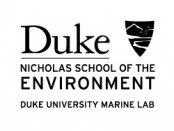Ansley Arnow, Caleb Stevens, Giselle Wang, Nathan Cho, Rahul Sengottuvelu
Introduction
As human civilization grows ever greater, we are placing more and more impact on nature, especially the ocean. One specific conservation issue that emerges from humans’ extensive use of the ocean is managing shared space between marine animals and fisheries. It is estimated that each year, over 300,000 marine mammals die from entanglement with fishing gear. This problem is exacerbated on the west coast of the United States where people have observed an increasing number of entangled humpback whales that are coming to the coast more often, where there is a high density of crab-fishing operations. The whales seem to be coming to the coast because an increased number of marine heatwaves caused by climate change are compressing their habitats and pushing them to the coast to feed. It is a stark reminder that the ocean is a vast and extremely interconnected system. This particular issue raises awareness for the location-specific and indirect impact of climate change and calls for a better approach to managing the co-existence of humans and marine animals.
Background
When the temperature of the ocean is significantly higher than the expected value at a certain time of year for an extended period of time, it is defined as a marine heatwave. Its causes can be simply the movement of marine currents and an increase in atmospheric temperature. Climate change has induced more frequent marine heatwaves, which greatly affects biodiversity. Some organisms benefit from it and some are suppressed, leaving a significant imbalance in the ecosystem.
Humpback whales are filter feeders, eating krill, plankton, and small fish. Marine heatwaves narrow the range of ocean zones that benefit from coastal upwelling to areas that are more inshore, so whales come to these areas to feed on the great abundance of food brought to inshore waters from the deep sea or surface currents.
Methods
Santora (2020) evaluated the relationship between the extent of habitat compression and the number of whales that share space with crab-fishing activities and found a positive relationship. They took into account factors such as normal ecosystem biodiversity, whale occurrence, entanglement records, habitat compression, and fishing operation locations.
The study also interviewed fishermen and provided management solutions to reduce harm for marine bycatch species.
Results
The study found that the behavior of coming further inshore to feed is indeed a probable cause for higher entanglement rates, as their feeding area now overlaps with crab-fishing operations. This area manifests unusually high biodiversity from marine heatwaves and upwelling, making it an attraction for both predators and fishermen, which can be problematic.
Therefore, the study provides a few policy solutions, including a more dynamic management approach that adjusts according to seasonal changes in the ecosystem, especially in the face of MHW. It would also be helpful if ecologists provide fishermen with easily caught indicators of ecosystem health, so they can act quickly and effectively.
Conclusion & Future Studies
Apart from bycatch, the decrease in prey species also causes other problems for humpback whales, including a lack of nutrition and thus a decrease in reproductive success and increased calf mortality. We might observe a sharp decrease in the overall humpback whale population if marine heatwaves become a frequent phenomenon.
A study in Alaska shows that when the region was affected by a prolonged marine heatwave from 2014 to 2016, sand lance, a key prey fish, decreased in abundance and size, causing a shortage of food for various marine mammals, seabirds and large fish. This shows how marine heatwaves can affect the whole marine ecosystem in a bottom-up fashion, and further studies on this phenomenon are crucial to understanding its impact.
More research into indicators of a potential marine heatwave is also highly recommended. Such indicators could include changes in the diet of certain predators, lack of abundance of prey fish or change in thermohaline movement. If we can predict and map marine heatwaves, we can set up policies in advance to minimize anthropogenic damage when new animals move into a habitat. It is also recommended that further studies be done on what triggers marine heatwaves and provide projections for how frequent they will be in the future.
A new wave of the marine heatwave we call “the blob” is coming back as of 2019, and if we learn from past experiences in dealing with them, maybe we can protect the lives of more animals and fishing businesses this time.
This is the original research paper mentioned in the article
https://www.nature.com/articles/s41467-019-14215-w
Santora, J.A., Mantua, N.J., Schroeder, I.D. et al. Habitat compression and ecosystem shifts as potential links between marine heatwave and record whale entanglements. Nat Commun 11, 536 (2020). https://doi.org/10.1038/s41467-019-14215-w
Related Articles:
https://www.nature.com/articles/s41586-018-0383-9?source=post_page—————————
Marine heatwaves become more frequent under global warming
https://www.nature.com/articles/s41558-019-0412-1
Marine heatwaves threaten global biodiversity and the provision of ecosystem services
https://wwf.panda.org/our_work/oceans/problems/bycatch222/bycatch_victims/
Bycatch number
https://journals.ametsoc.org/doi/pdf/10.1175/BAMS-D-17-0119.1
Multiyear Marine Heatwaves
https://www.int-res.com/abstracts/meps/v613/p171-182/
Decline in prey species due to MHW



18 responses to “The Effect of Heatwaves on Whale Entanglements ”